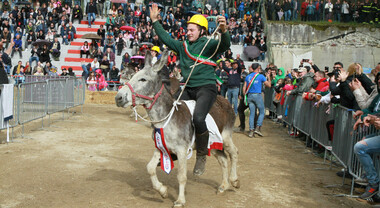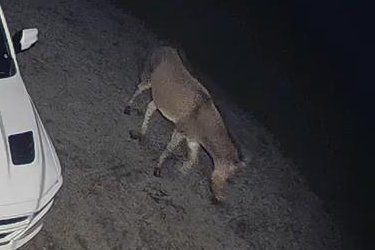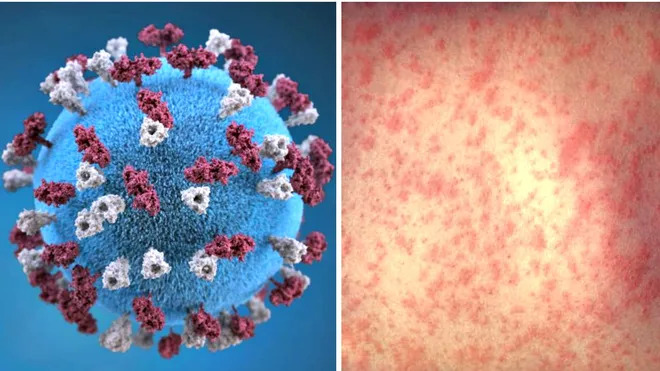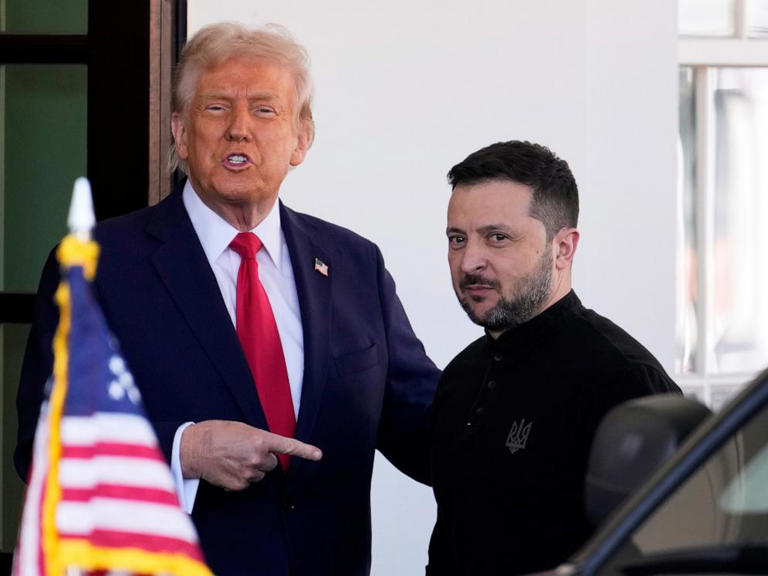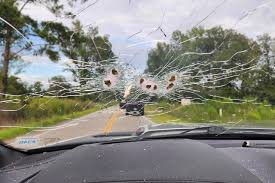
Spivey, 33 years old, got back in his Silverado and fired several shots from inside the truck before going limp. He had been headed home after a Saturday afternoon drinking beer and whiskey at the bar of Boardwalk Billy’s. Witnesses said they didn’t see who started the gunfight.
When Horry County police arrived, Boyd said Spivey fired first, and that he and Williams shot in self-defense. Hours later, the lead detective in the case cemented Boyd’s version of events, citing interviews with witnesses and the two shooters.
Spivey’s actions on Sept. 9, 2023, driving erratically and pointing a gun at people and vehicles along Highway 9, had led to his death, Detective Alan Jones wrote in his initial report. It looked like a case of road rage, he said.
Prosecutors later came to the same conclusion. Under a South Carolina statute known colloquially as the stand-your-ground law, Boyd and Williams were permitted to shoot in self-defense after Spivey brandished a gun. Boyd said one of his bullets killed Spivey.
A prosecutor from the state attorney general’s office closed the case a year ago.
Spivey’s sister, Jennifer Foley, didn’t believe any of it—not that Spivey shot first or that Boyd had a right to kill him. She suspected the road rage was Boyd’s, angry at her brother, who had waved a gun out the window, then pulled his truck in front of Boyd’s and braked.
Boyd had called 911 to report Spivey, but he chased him instead of letting police handle it, Foley said. She believed Boyd intended to capture or punish her brother himself. Boyd told police he followed Spivey to help officers and protect other drivers. He and Williams have denied any wrongdoing.
Boyd and Williams had only to say they feared for their lives when confronted by an armed man to be shielded under the state’s stand-your-ground law, one of the most permissive in the U.S. That standard makes testimony difficult to refute without substantive evidence to contradict it.
After feeling stonewalled by Horry County police for more than a year, Foley got an electronic copy of the police file in February. Within hours, Foley, a 37-year-old high-school biology teacher, learned Boyd had more than the law on his side.
In a phone call minutes after the shooting, Boyd asked for help from Brandon Strickland, deputy chief of the Horry County Police Department. Strickland told Boyd that he would protect him—handpicking the investigators to send to the scene.
“My people,” Strickland called them. In nine calls recorded over four days, Strickland, who was in charge of criminal investigations, advised Boyd and kept him apprised of the case.
Their conversations are among more than seven hours of recordings made by an app on Boyd’s phone before, during and after the fatal shooting. Boyd’s calls with Strickland and others are included in the 70-gigabyte police file.
Foley and her family were denied access to the file because Spivey wasn’t classified as a victim under the stand-your-ground law. In the state’s view, Spivey was responsible for his own homicide.
Boyd himself opened the police file to scrutiny. After the Spivey family filed a wrongful-death lawsuit against Boyd last year, his lawyer pressured police to turn over the file to help in Boyd’s defense. That allowed Foley and her family their own copy.
This account is based on interviews, 911 calls and the police file, which includes body-camera and dash-camera footage from the night of the shooting, commercial surveillance-camera footage of the chase, text messages and Boyd’s phone recordings. Boyd and his lawyer, Kenneth Moss, declined to comment.
Foley first listened to the recordings over Super Bowl weekend.
At least 25 minutes were erased from the nine recorded conversations between Boyd and Strickland in the police file that Horry County turned over to attorneys.
The records led Foley and her family to believe Spivey’s homicide investigation was tainted from the start. She didn’t know if police, prosecutors, Boyd or Boyd’s lawyer had listened to the recordings—or whether Boyd’s conversations were missed, ignored or concealed.
Despite promises of protection from a high-ranking friend, Boyd had a nagging worry.
Kill shot
Boyd and Strickland hunted and fished together, and they were known locally as small-town boys who had grown into successful men.
Strickland oversaw a third of the Horry County Police Department, including the 80 detectives, crime-scene technicians and other staff in the criminal investigations division. The 41-year-old, married with two children, was on a fast track to becoming chief.
Boyd, 34, owns Buoys on the Boulevard, a popular oceanside restaurant that serves free meals to uniformed police, charges half-price to officers who bring their families and hosts police department functions.
On social media, Boyd fosters a rough-and-ready image, including a 2022 video post showing himself repeatedly punching a rowdy restaurant customer in the face. “Guy got assault and disorderly conduct,” he wrote. “He also got a trip to the doc.” Boyd kept a Samsung tablet mounted on his dashboard and shared videos he took of erratic drivers.
Boyd frequently posted videos of himself firing some of the 70 or so firearms he owns. In one video, he set off a cannon. In another, he displays his kill shot, blowing open a fake head, sold online, which sprayed simulated blood and brain matter. Boyd set the video to replay in slow-motion.
When Boyd was in his 20s, he served 14 months on active duty in the National Guard. His license plate identifies him as a veteran, and he wears a tattoo of a semiautomatic rifle on his left arm, along with “Memento Mori,” Latin for Remember you must die.
Boyd had recently broken up with his fiancée when he crossed paths with Spivey on a steamy summer evening. Earlier in the day, Boyd listed for sale the 2023 Toyota 4-Runner and 5-carat diamond engagement ring he had bought her.
The woman was seven months pregnant, and she and Boyd were in a custody battle over their unborn child. Boyd had installed the recording app on his phone to gather evidence during calls that might help his case.
Boyd and Williams were en route to Bonnie Bay farm, a pick-your-own-blueberry attraction and firing range that Boyd owned, when Spivey pulled his Silverado truck alongside them and waved a .45 caliber pistol. Spivey pulled in front and braked, forcing Boyd to steer into the highway median.
Boyd got his Dodge Ram TRX back on the road and went after Spivey.
“He keeps throwing the gun in our faces, acting like he’s about to shoot us. If he keeps this up, I am going to shoot him,” Boyd told the 911 operator. “He’s trying to run from me now.”
Shortly before 6 p.m., Spivey turned onto Camp Swamp Road, stopped and got out of his truck, not far from the house where he and his sister had lived as children.
The gunfire was recorded on the 911 call, and when it ended, Boyd called his mother.
‘Is he at fault?’
“Please f—ing stay here and talk to this cop,” he said.
Boyd walked to the black Silverado and took a picture of Spivey’s body, slumped over the center console, and texted it to Moss, his lawyer.
At 6:10 p.m., Horry County police officer Kerry Higgs arrived with lights and siren going.
“He shot us first,” said Boyd, who identified himself as a veteran. He gestured toward the drivers nearby and said, “They saw everything.”
After checking to see that Spivey was dead, Higgs called in an update. “I got multiple witnesses stating that the victim had jumped out and brandished a pistol,” Higgs said. The officer had been on the scene for three minutes and hadn’t interviewed anyone but Boyd, according to his bodycam footage.
Horry County Fire Rescue paramedics and firefighters arrived. Four of them examined Spivey’s body and identified a major wound in his torso. The bullet appeared to have entered his back. They were surprised: Shouldn’t the entrance wound be in his chest?
“He was turned around, facing backwards,” Higgs replied. He demonstrated his theory by twisting his head to one side and pretending to shoot over his shoulder.
Paramedic Jeremiah Zimmerman followed up with Higgs. “A question, because I’m nosy,” Zimmerman said. If Boyd shot him in the back, he said, “is he at fault now?”
“No,” Higgs said.
McMurrough said later he didn’t see Spivey shoot. But as he drove past the two trucks, he recalled seeing Boyd pointing his pistol toward Spivey, his hands braced on the dashboard. The shooting started, and from his rearview mirror, McMurrough said, “the driver of the black truck looked like he was getting hit by paintballs.”
Officer Damon Vescovi and Lt. Doug Dishong conferred at 6:50 p.m. Based on drivers saying Spivey waved a gun while driving on the highway, and McMurrough seeing Spivey outside his truck with a gun, they agreed the killing looked like self-defense.
“You know what’s weird?” Vescovi told Dishong. “I know that guy that’s dead. This is so out of character for him. He’s a churchgoing guy.”
Detectives and a local prosecutor arrived after 7 p.m. Vescovi turned to Higgs and gestured to his body camera and said, “Are you off?” There are no bodycam videos for the next hour.
By the time the police bodycams were turned back on, Spivey’s truck had been towed to the police impound lot, his body still inside.
Six hours later, Jones emailed his initial findings to colleagues. “All indications are that the actions of Mr. Williams and Mr. Boyd are justified,” he said.
Good to go
Foley studied biology and criminal justice in college and worked as a summer intern in the crime lab of the North Carolina State Bureau of Investigation. She moved home after graduation, married a farmer, had children and taught biology at South Columbus High School, her alma mater.
Four days after the shooting, Foley spoke by phone with Jones. The detective said Boyd and Williams were cooperating, and their lawyer was arranging for them to turn over their phones. Jones would give her an update in a few weeks.
Strickland told Boyd in a recorded call that he personally picked Jones for the case and had said to the captain overseeing the investigation that Boyd was a good guy. The deputy chief said he had assurances from Horry County Solicitor Jimmy Richardson that the prosecutor assigned the case was agreeable with Jones’s view—that Boyd acted in self-defense.
Richardson told The Wall Street Journal that he spoke with Strickland on the night of Spivey’s shooting and that it wasn’t uncommon for police to notify the solicitor’s office about a homicide. Richardson said he also spoke that night with the on-call prosecutor to provide the homicide location and Jones’s name, the detective in charge.
“Absolutely no assurances were ever made to or about Mr. Boyd by anyone in our office,” Richardson said. The county referred the case to the state attorney general’s office within a week of the shooting.
Strickland told Boyd that the case would be wrapped up by the end of the week. He apologized about police seizing Boyd’s gun and truck, and he said they would be returned shortly.
Both men laughed when Strickland offered to buy Boyd’s 2022 Dodge Ram for $10,000, a fraction of its value. Strickland said he was serious, though, about buying the 5-carat diamond engagement ring that Boyd’s ex-fiancée had returned. The deputy chief said his wife had seen the for-sale post and liked that the diamond was bigger than her own.
“We’ll work something out,” Boyd said. Then they talked about arranging a guy’s night out with their friends in law enforcement after the investigation was over.
Three days after the shooting, Boyd called Jones to complain about anonymous callers to his restaurant who accused him of murder. Boyd said he wanted the police department to put out a statement clearing his name.
Jones, who was in Charleston, S.C., awaiting the conclusion of Spivey’s autopsy, told Boyd he had nothing to worry about.
The big game
Several hundred people sang “Amazing Grace” at Spivey’s funeral service. The family had moved the service from their small church to the auditorium of South Columbus High School to accommodate the many mourners. Spivey had graduated there before following his sister to North Carolina State University.
Foley and her parents decided against an open casket. The autopsy had left Spivey’s skull lined with sutures, and the fatal bullet had hollowed out his chest. Spivey had what looked like postmortem bruising on his face when the Silverado was towed to the police impound yard with his body still inside. “They treated my brother like roadkill,” Foley said.
State statutes require bodies be transported under the supervision of the coroner. A deputy coroner agreed to allow police to tow Spivey’s body in his truck “based on the expectation of heavy rain,” which might have compromised evidence, according to the coroner’s office.
A week after the funeral, the family complained to county council members that police hadn’t examined Boyd’s phone or his dash-mounted Samsung tablet.
In November 2023, Boyd and Williams gave police their phones and Boyd’s tablet. In response to the Spivey family’s complaints, the South Carolina Law Enforcement Division agreed to review the police file, which included the calls between Boyd and Strickland.
The state finished its review on Jan. 26, 2024. An agent added a note to the case file saying, “no additional evidence was discovered.”
Foley called lawyer Mark Tinsley about representing the family. Tinsley had never sued a defendant in a stand-your-ground case, largely because the law grants civil immunity to the killer. In fact, he found no record of any lawyer filing such a case in South Carolina.
Tinsley agreed nonetheless, saying he was offended by the idea that a person could follow a driver for 9 miles and then claim self-defense for killing him. “How do you stand your ground when you’re chasing someone else’s?” the personal-injury lawyer said.
Last April, a state prosecutor told the family that the case would be closed without charges. On June 3, the family filed a wrongful-death lawsuit against Boyd and Williams.
On the Friday of Super Bowl weekend, Foley picked up a copy of the voluminous police file, which was encoded in a flash drive. Foley was determined to cover as much ground as she could before Monday, when Boyd was scheduled to appear at a deposition in the lawsuit. By kickoff in the Chiefs-Eagles game that Sunday, she found the Boyd recordings.
At 6:57 a.m. Monday morning, Foley texted Tinsley.
“I’ve been up all night going through the evidence files,” she wrote. “Please call me.”
‘They took an oath’
Three hours later, Tinsley began questioning Boyd at Moss’s law office. Tinsley planned to submit Boyd’s sworn testimony at a court hearing, scheduled for mid-March, where a judge would decide if the family’s lawsuit could move forward.
Tinsley sought to persuade the judge that Spivey’s killing wasn’t done in self-defense. He hoped to show first that Boyd wasn’t truthful about his role in bringing about the confrontation and that he was angry, not afraid for his life when he shot Spivey.
The lawyer didn’t bring up Boyd’s recorded conversations in the police file.
Tinsley asked Boyd, “If you chased Mr. Spivey, do you think you can claim self-defense?”
“I didn’t chase Mr. Spivey,” Boyd said.
“You’re not gonna apologize for anything, right?” Tinsley asked later in the deposition.
“No, sir,” Boyd said.
“Because you loved it?” Tinsley asked.
“I wouldn’t say that. I might have—I mean, I might have made a comment that I’d like to see if you’d show it to me,” Boyd replied, “but this was a pretty bad situation.”
Tinsley asked Boyd whether he used the dash-mounted tablet to make a video during his encounter with Spivey. “Did you use that at all?” he said.
“No, sir,” Boyd replied.
State investigators in February 2024 received a screenshot of a text Boyd sent to his ex-fiancée that said, “I have video of” Spivey aiming his gun at cars, according to a spokeswoman for the state law enforcement division. The state sent that and other material to Jones, the spokeswoman said. The text about the video doesn’t appear in the police file.
When Boyd’s tablet was returned to police in November 2023, it contained no videos of the chase or the gunfight. The tablet indicated that videos had been saved on an external memory card, which isn’t in the police file. “As far as I know, the tablet was not utilized at all and there were no images or recordings from the tablet,” said Moss, Boyd’s lawyer.
Two weeks after the deposition, Tinsley spoke with Horry County Attorney David Jordan about the case. “Have you listened to all these calls?” Tinsley asked. “Because if you haven’t, you need to.”
Jordan called Tinsley days later. “How the f— weren’t these guys charged,” Tinsley recalled him saying. On March 7, Jordan briefed the Horry County police chief and county administrators about the recordings. He didn’t respond to requests for comment
Strickland was forced to resign from the police department on March 11. Horry County Police Chief Kris Leonhardt said in a news conference the next day that he asked state and federal authorities to review the case.
Bert von Herrmann, Strickland’s lawyer, said his client did nothing to influence the investigation. Strickland’s recorded assurances to Boyd were “all bluster,” von Herrmann said. “That is him trying to comfort Weldon, and probably quite frankly, a little self-aggrandizing.”
Horry County police detectives are assigned on-call duty in advance, meaning that Jones responded to the Spivey homicide because it was Jones’s turn, according to an Horry County spokeswoman. Horry County police didn’t make Jones available for comment.
Tinsley alerted state officials to the audio recordings in early March. The South Carolina Law Enforcement Division announced on March 13 an investigation into Strickland’s conduct, but not the Spivey killing. The court hearing for the family’s civil suit has been postponed, pending the outcome of the state investigation of Strickland’s conduct.
A prosecutor from the state attorney general’s office recently listened to the recorded conversations, a spokesman said. The recordings didn’t change last year’s decision to close the case without charges, the spokesman said.
Foley said she and her family want authorities to reopen the homicide case, in light of all they have learned. Her brother, she said, deserved better.
“Horry County did not do the investigation they needed to do,” Foley said. “They took an oath to do the job, and they didn’t do it.”

